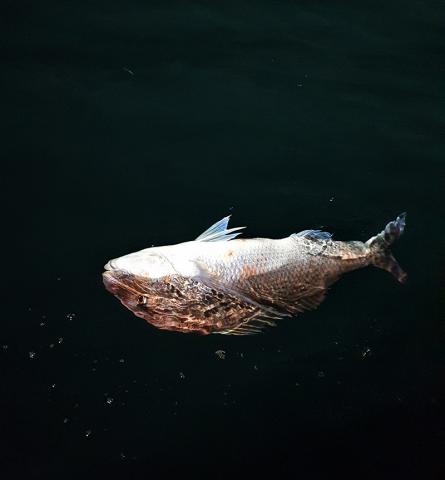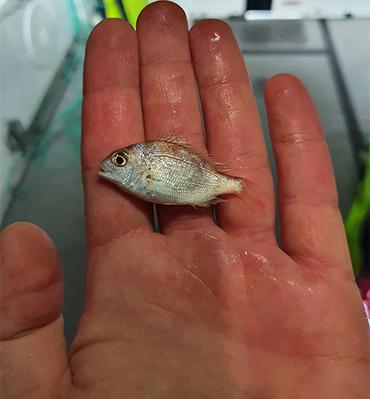By Brad Collis
Strategies to reverse the population decline in Australian fisheries that fish for Snapper (Chrysophrys auratus) are the focus of FRDC’s latest research on the species, including the impact of ‘catch and release’ practices.
Improved understanding of the survival rates of released Snapper (Chrysophrys auratus) will help to address a major knowledge gap that has existed in the increasingly challenging fight to revive Australia’s Snapper fisheries.
The sustainability of Snapper, an iconic marine fish species and one of the most popular eating fish in Australia, has been an FRDC research investment priority for over two decades as populations have declined throughout most Australian waters. Of significance was the national Snapper Workshop held in November 2019, and funded by FRDC (2019-085) and involving representatives from Government, independent scientists, fishery managers and FRDC on all three days and an additional ten commercial, charter and recreational fishing representatives attending on the third and final day of the workshop. The workshop culminated in a recommendation for the development of a ‘best practice’ (toolkit) for managing Snapper as well as a number of cross-sectoral actions.
Extensive research has identified a complex mix of factors responsible for these declines including the influence of environmental change on spawning and recruitment success, highly variable recruitment of juveniles between years, and over-exploitation of some populations.
Fisheries for Snapper in Australia are managed using a variety of management tools including minimum size limits, daily bag limits and seasonal closures. A fundamental assumption of these management tools is that the fish survive following release. However, a growing body of research has demonstrated that the survival rates for some species, including Snapper, can vary drastically in response to ‘catch and release’.
South Australian researcher Dr Troy Rogers explains that line-caught Snapper are susceptible to barotrauma (the effect of pressure change) when pulled to the surface during fishing.
“Barotrauma is caused by the expansion of gases within the fish’s body and is commonly identified by a swollen abdomen or the stomach everted from the mouth,” he says.
“The severity of barotrauma increases with depth as a result of the greater pressure change experienced by the fish. Injuries from barotrauma can significantly affect the survival of released fish and can contribute to total fishing mortality.

Barotrauma Snapper
“Fishers will often say the released fish swam away untroubled, although our current study has shown that it can take up to 12 hours for Snapper to succumb to the effects of barotrauma.”
Dr Rogers, from the South Australian Research and Development Institute (SARDI), part of the Department of Primary Industries and Regions South Australia, is the lead researcher in the FRDC supported project, ‘Quantifying post-release survival and movement of Snapper’, that seeks to fill this information gap. This research builds on the historical projects that FRDC funded through the Released Fish Survival Program that resulted in best practise guidance and included the use of release weights and directions on how to mitigate barotrauma (2004-070).
He says the mortality rate from barotrauma needs to be understood to accurately determine total fishing mortality. For example, if a high proportion of fish do not survive release, then the total number of fish that are effectively removed from the population may be considerably higher than retained catch alone.
The research is particularly important for South Australia which has been forced to close the Spencer Gulf / West Coast and Gulf St Vincent stocks to Snapper fishing until 30 June 2026. Both stocks have been closed since 1 November 2019.
To measure the survival rates of released Snapper, Dr Rogers and his team have caught Snapper in the wild, fitted them with tiny electronic tags and monitored them using acoustic telemetry for three months. The fish were caught at various depths to emulate common fishing areas of both commercial and recreational fishers and they were released using different techniques (with and without a descender device) to evaluate their effectiveness.
The researchers have found that the fish caught in shallow water had much higher survival rates than fish caught in deep water, consistent with the relationship between the severity of barotrauma and depth. Fish released at depth also had a higher probability of survival.
“Monitoring the fine-scale movement and behaviour of Snapper in the wild using electronic tags is a novel method to understand immediate and delayed responses to capture and release,” says Dr Rogers.
The objective, once the data has been fully analysed, is to provide fisheries managers with an improved understanding of Snapper movement and survival when released. This will help them to work with the various fishing sectors to develop a code-of-practice for fish-handling and harm-minimisation.
The project has been running since January 2020 and concludes at the end of June 2023.
Lost recruits
A parallel project which finishes at the end of 2023 has been investigating recruitment variability for Snapper. A characteristic of Snapper populations is that recruitment – the number of juvenile fish that enter the population each year – varies significantly between years, which has contributed to the collapse of the South Australian populations.

Juvenile Snapper
The Spencer Gulf / West Coast stock has experienced poor recruitment since 1999, whilst the Gulf St Vincent stock has experienced poor recruitment since 2009.
Dr Rogers says Snapper larvae have a narrow survival window that requires the right food source (plankton) in the right place at the right time after hatching. These conditions vary from year to year, meaning that recruitment ‘events’ for Snapper tend to be sporadic.
The latest research has been seeking to better understand the environmental interactions that influence this and, specifically, the reasons there has been insufficient recruitment to sustain snapper populations.
A key output from this current research project has been the development of a recruitment index, which provides an estimate of the relative strength of recruitment between years. This involves towing a small beam trawl behind a boat to catch baby snapper from the previous year’s spawning.
“The recruitment index provides an indication of what to expect in the adult population in four to five years’ time when those fish reach legal size,” says Dr Rogers. The challenge for a depleted population is that even with favourable conditions for recruitment, the number of recruits is likely to be low because of the diminished adult population.
The current Snapper closure appears to have stopped the declines in biomass, but there is not yet evidence of stock recovery. There is, however, some evidence that the closure has allowed the Snapper to increase their natural schooling behaviour to spawn throughout the warmer months. These undisturbed schools of spawning fish may increase the potential for future spawning success and stock recovery. See the SARDI website for further detail on the research findings.
This relates to R&D Plan Outcomes 2 & 4





